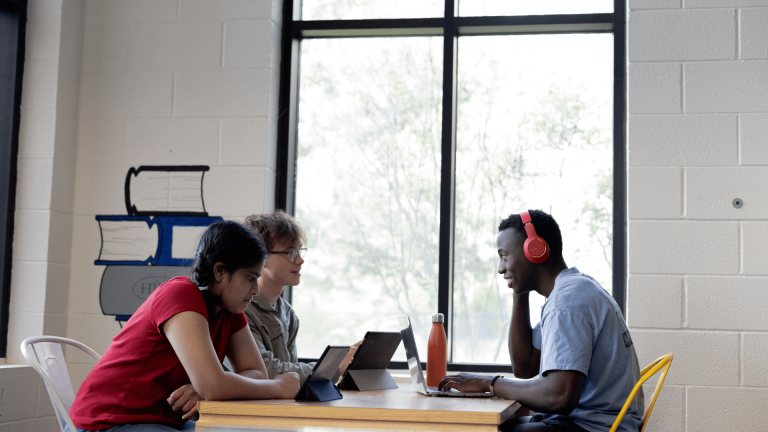
The 2020 back-to-school season is in full swing, and not only does it look completely different than last year's, but it looks completely different from school to school, district to district, and state to state. As we strive to support schools and districts, regardless of their instructional continuity plan, we’ve identified three common back-to-school plans being used this fall.
Choose Your Own Adventure: Online or In-Person Learning
Students and parents are being given the option to choose which method of instruction they're most comfortable with, with options ranging from in-person instruction to fully online learning. To guide you in providing equitable access to learning regardless of how instruction will vary from student to student, here are a few best practices to keep in mind with this plan:
- Focus on participation, not attendance
Outline your criteria for participation, whether it's assignments turned in, mastery demonstrated, or interactions between students and instructors. Consider adopting a personalized blended-learning approach that allows students to explore concepts based on their interests and learning styles. All students are expected to learn the key standards and concepts, but with this style of learning, they can choose from various activities and pathways to get there via MasteryPaths.
- Emphasize learning goals and outcomes, not grades
Share learning goals and success criteria with students to enable them to take more ownership over their learning. Additionally, find ways to provide meaningful feedback at every step of the learning cycle to communicate that learning will continue and to offer greater insights into student progress.
- Enable collaboration and connection between in-person and remote students
With the expectation that learning models will vary from student to student, you can create new opportunities for collaboration with integrated apps and tools that provide a more connected experience. Try hosting group discussions in Canvas to allow equitable engagement, streamlining assignment submissions for all students via Google Assignments, or maintaining regular student interaction with video-conferencing integrations.
The Best of Both Worlds: Hybrid Learning
In this setup, all students experience some in-person class time and some remote learning days. This might be achieved by dividing up the week (e.g. two days in class and three days of remote learning) or dividing the student population based on name and/or location, etc. The goal is for all students to receive some in-person instruction, while reducing capacity at school for the safety and wellbeing of students and teachers. School districts can customize hybrid schedules to meet their needs highlighted by research, experience, and feedback. Here are some best practices for combining online and in-person instruction to create robust learning experiences:
- Use data to drive instruction
The rapid transition to distance learning caused many students to fall behind. To mitigate additional learning loss, teachers must begin the year by capturing an accurate snapshot of what learning was retained from the previous year. With frequent formative assessments, teachers can clarify which students are faring best in remote/online learning and which would benefit the most from more in-person instruction, making it easier to build schedules and organize targeted groups around individual student needs.
- Personalize learning with targeted groups
Create interactive modules where groups of students work at different stations, moving between face-to-face instruction and online assignments seamlessly. If you divide groups based on skill level, you can adjust instruction to meet the needs of each individual student.
- Build a foundation for communication
Kick the year off with a virtual orientation for students and parents so they understand how their hybrid school days will work, where they can get help when they need it, and what your communication preferences are. Follow that discussion with clear guidelines for how communication will continue throughout the year with informative course homepages that include detailed schedules for future instruction and schoolwide announcements.
Prepare to Pivot: Situational Learning
This plan begins with the expectation that whichever instructional delivery method is chosen at the beginning of the year will fluctuate as safety guidelines continue to evolve. If your school or district anticipates changes to instructional plans mid-year, here are some pointers to keep everyone on track:
- Create contingency plans in advance
Establish communication protocols for students, teachers, and parents so mid-year changes can be communicated effectively and efficiently when the time comes. Outline what's needed for future transitions to limit disruption and stress.
- Prioritize equitable access
Learning from home taught us all that equity doesn’t begin and end with access to devices. Students also need access to high-quality content and curriculum paired with support at home to keep the learning going. Focus on providing that access and support by offering students multiple opportunities to demonstrate what they know, wherever and however they are learning.
- Boost digital literacy
Constant changes in instruction can be stressful for both students and teachers, making it more important than ever to incorporate integrated technology tools that provide a sense of consistency to the learning cycle. The perpetual use of tech, both online and in person, increases comfort and familiarity among teachers and students, allowing teachers to collaborate with one another and improve usage, contributing to students’ ownership of learning and overall digital literacy, and easing any rapid transition in classroom format.
However teaching and learning looks for you this fall, we'll continue to support you as you tackle the challenges ahead. For more tools and resources, visit our COVID-19 resources page, where we continuously share tips and strategies for using tech effectively.
Related Content
 Teaching-With-Tech-10-Benefits.jpg
Teaching-With-Tech-10-Benefits.jpgBlogs
 wooclapft.png
wooclapft.pngBlogs
 lincolnlearning.png
lincolnlearning.pngBlogs